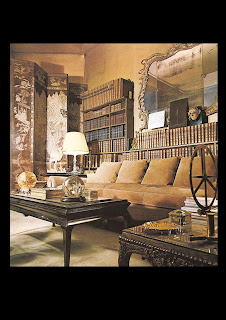The actual term Art Nouveau is derived from a shop opened by Siefried Bing in Paris in 1896. The shop was called La Maison de l’Art. Yet a hint of the style can be found in the work of William Blake and William Morris. Art Nouveau advocates aimed to create a completely new style with no reference or influence from past styles. Architects were reacting against the drabness of neoclassic and imperial architecture. Art Nouveau was a vital force changing the face of architecture across the Western world.
England
The Pre-Raphaelites are thought to have influenced the Art Nouveau movement. The group made up of Ford Madox Brown, Edward Burne-Jones, William Holman Hunt, John Everett Millais and Dante Gabriel Rossetti was met with critical hostility in Victorian England.
Edward Burne – Jones used medieval models but treated them with a fresh and modern look. The subject matter used was legends, myths and spiritual stories. He broke away from the normal size canvas sizes. Creating works on long horizontal and tall narrow canvases. His compositions were made up of exaggerated dreamy, linear graceful figures. Form was more important to him than colour. He also produced art glass windows and tapestries for the Morris & Co company.
Ford Manox Brown’s paintings are now in high demand. His work was original in British art during his life time and was largely ignored. He used brilliant colour on white backgrounds, naturalistic detail and contemporary subject matter.
Millais painted what is often considered the most important Pre-Raphaelite work ‘Ophelia’. He painted on a white background; flowers, plants and Ophelia floating down the river in precise detail.
Rossetti was torn between his two loves poetry and painting. He paintings were informed and inspired by his favorite authors especially Dante. He worked mostly in water colours developing his own technique ending up with images that looked like art glass work.
The first example of the style outside of painting in England was a chair design by Arthur Mackmurdo in 1882. You can find images of this chair at http://www.huntington.org/huntingtonlibrary_02.aspx?id=5660.
Arthur Liberty also used art nouveau designs in his fabrics. An example of liberty fabrics can be found at http://www.historicstyle.com/artnouveau/fabrics/full/ianthe_lin_det.html. Charles Ashbee also had an influence on English design at this time. The impact of the wonderful flowing illustrations of Aubrey Beardsley can be seen in Art Nouveau design. The new magazine ‘The Studio’ founded in 1893 helped popularize the style in Europe.
You may ask why this is all important. I agree with Goethe who stated:
‘It is impossible to understand
the present
the present
without knowing the past’
















































